Report + Support Third ReportWho uses Report + Support and what do they use it for?
How many disclosures were made in 2022-2023?
During the academic year 2022-2023, there were a total of 200 disclosures made via Report + Support. This is a slight decrease on the previous year where 209 disclosures were made.
Disclosures made by students fell by 13.6% (24) in 2023.
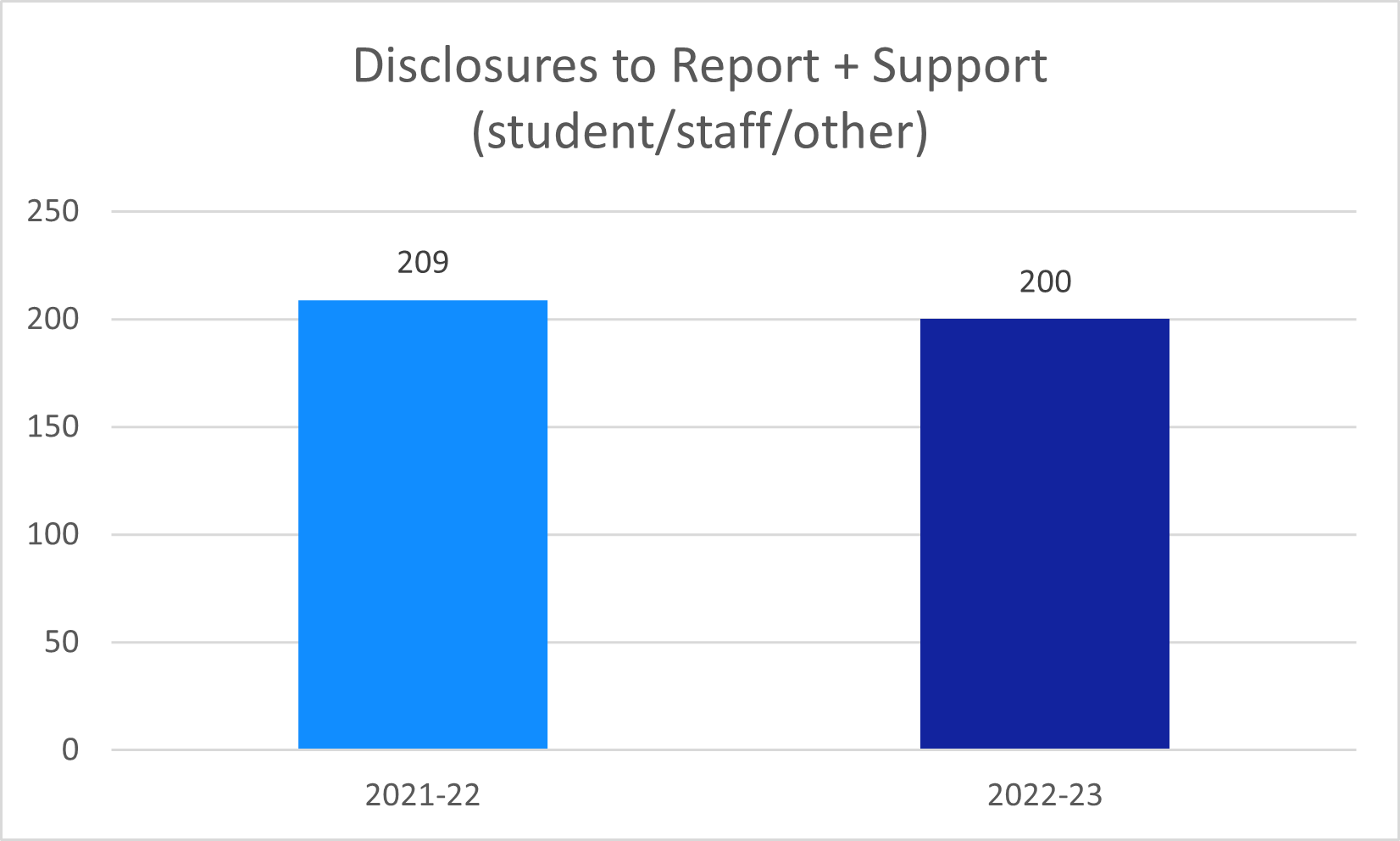
When are disclosures being made?
There are peaks in the numbers of disclosures made during teaching weeks, with the highest number of disclosures being made in October 2022.
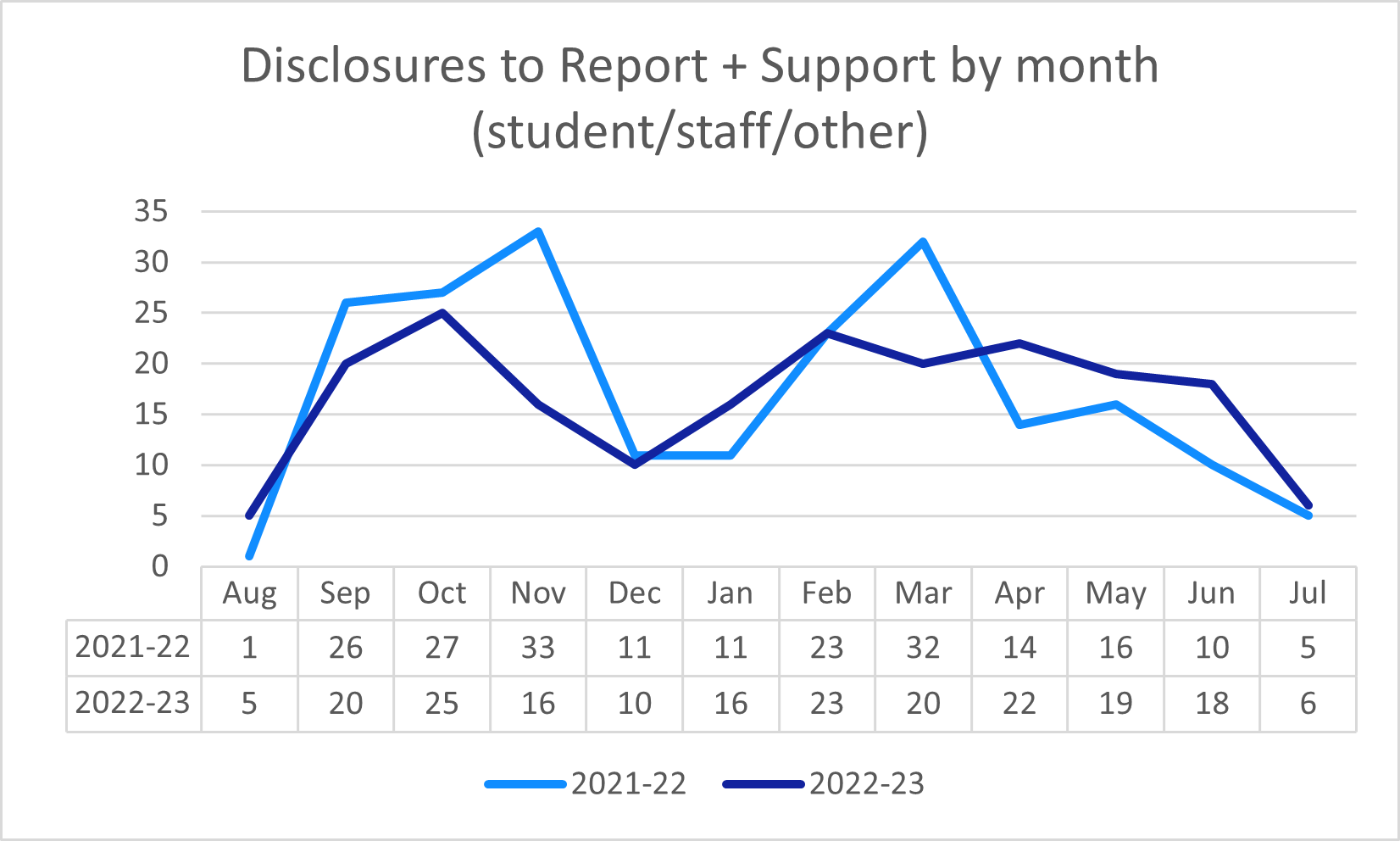
Student disclosures follow the semesters. There is, however, no discernible pattern for disclosures made by staff.
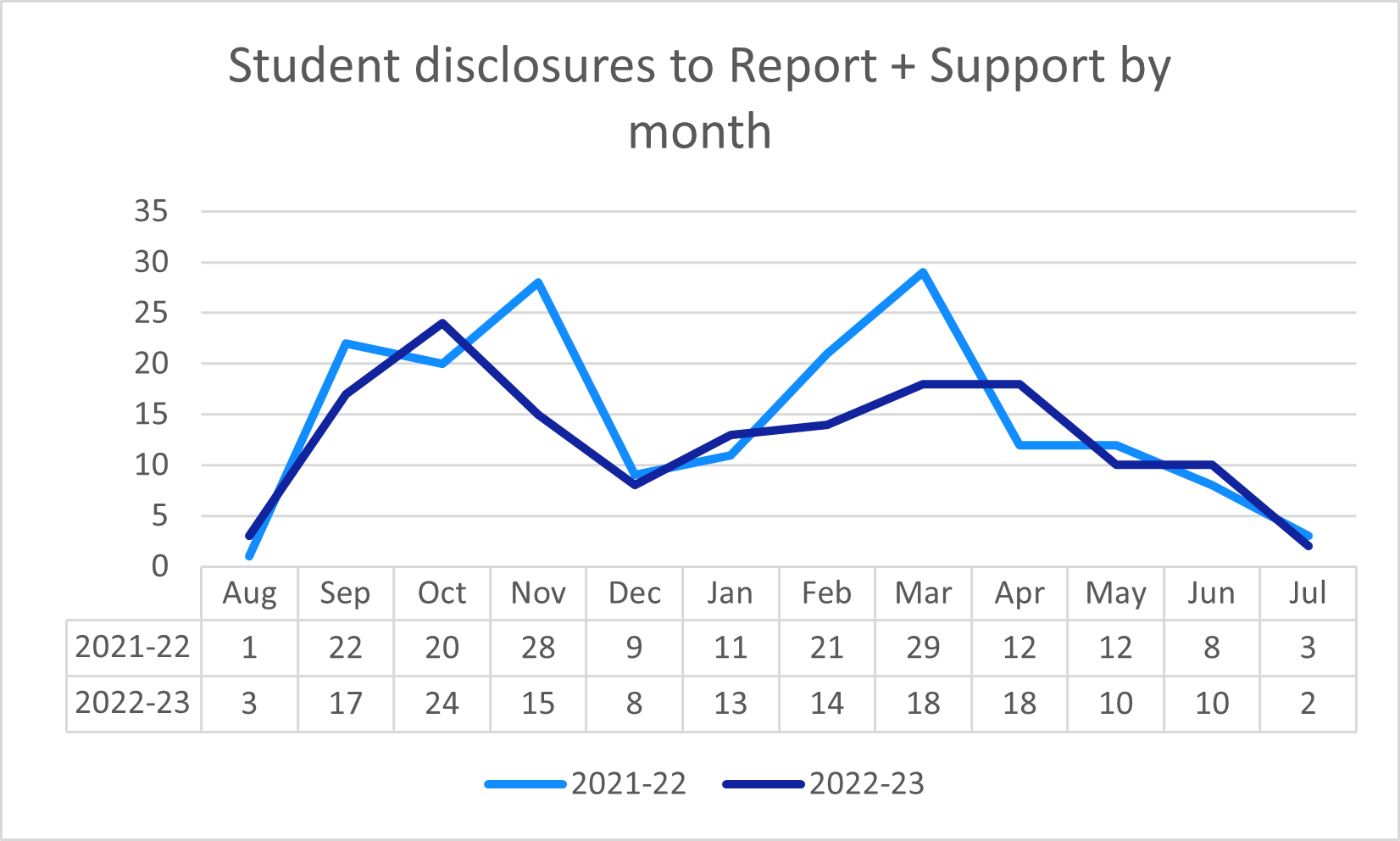
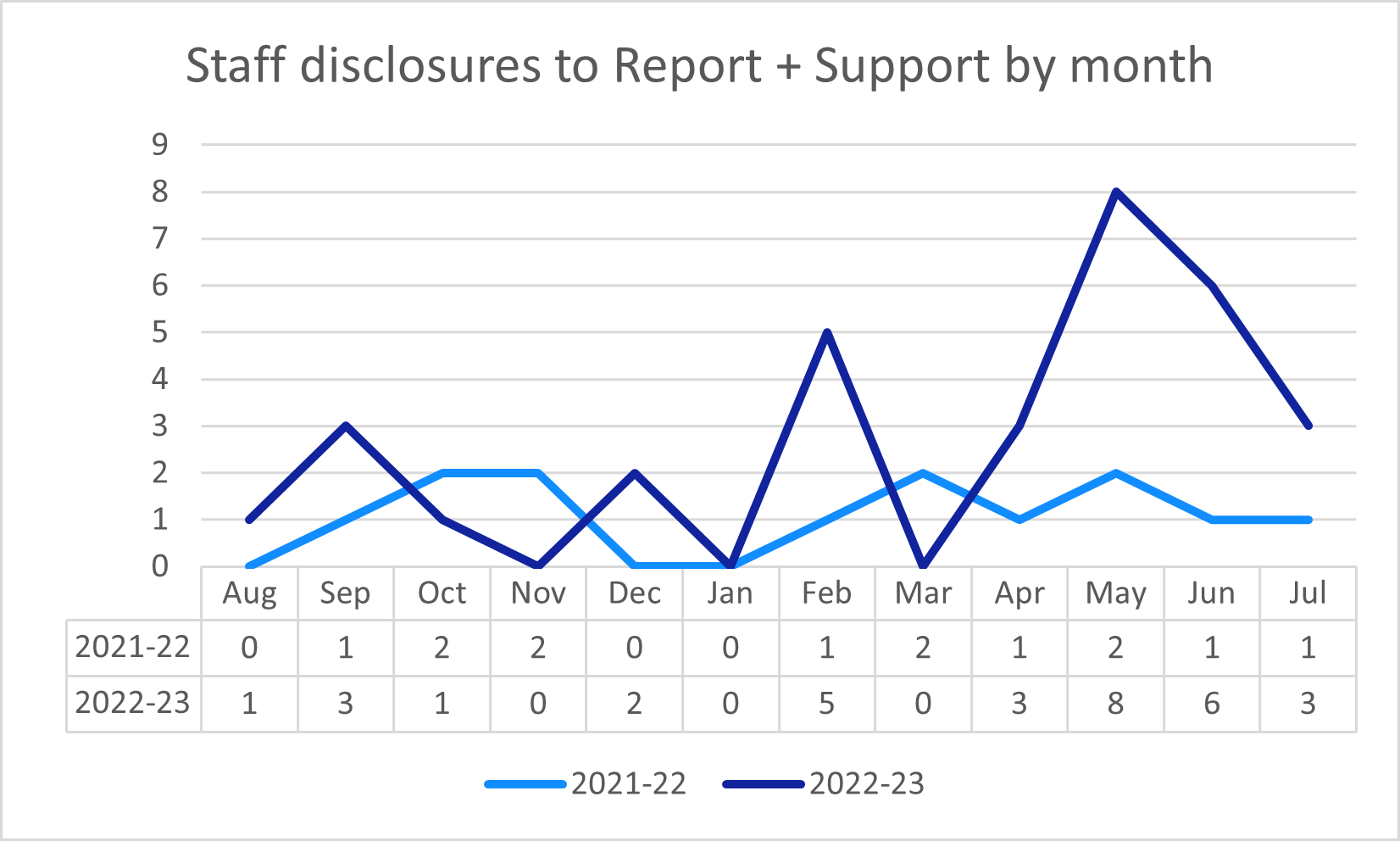
Who is making disclosures?
152 identified themselves as students, which is a decrease on the previous year where 176 disclosures were made by students.
Disclosures from staff have more than doubled compared with last year, with 32 disclosures in 2022-2023 compared with only 13 in 2021-2022. Greater awareness of the platform through integration into staff inductions and MySaint, may account for some of this. It is also worth noting that multiple disclosures are sometimes made for the same incident, which reflect an increased number of disclosures, but not an increased number of incidents.
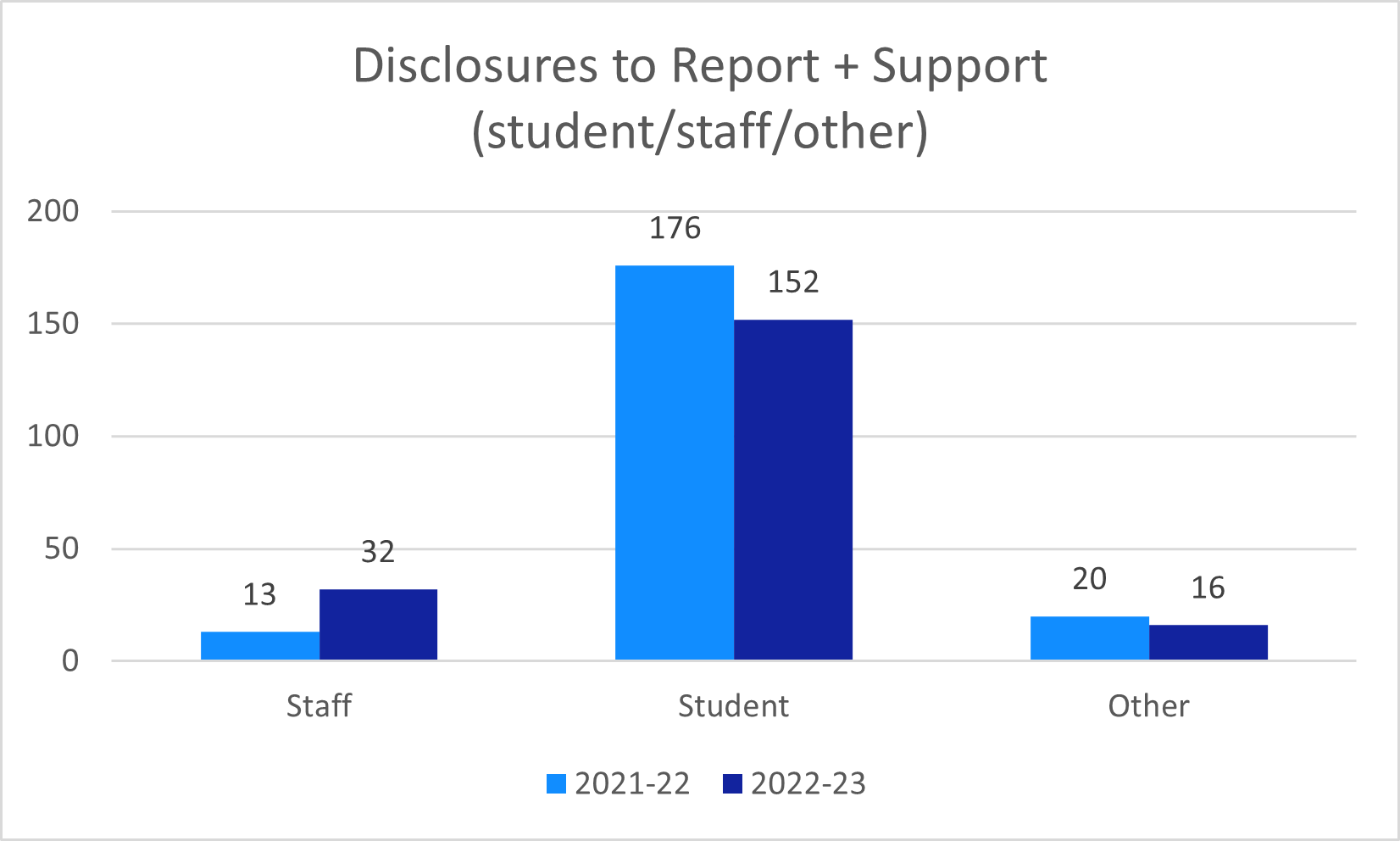
What is being disclosed?
The most common incident type disclosed by students and staff via Report + Support was Bullying, in contrast with 2021-2022 where the most common disclosures (outside of the ‘Other’ category) related to Sexual assault and rape. In the first six months of 2022 we saw an increase in the number of support article hits in the Bullying support pages, alongside an increase of disclosures in 2022-2023.
The total number of disclosures for staff and students relating to Sexual assault and rape and Sexual harassment and misconduct for 2022-2023 is 49, in contrast to 2021-2022 at 59. Many disclosers selected both categories, increasing the numbers of both individual incident types.
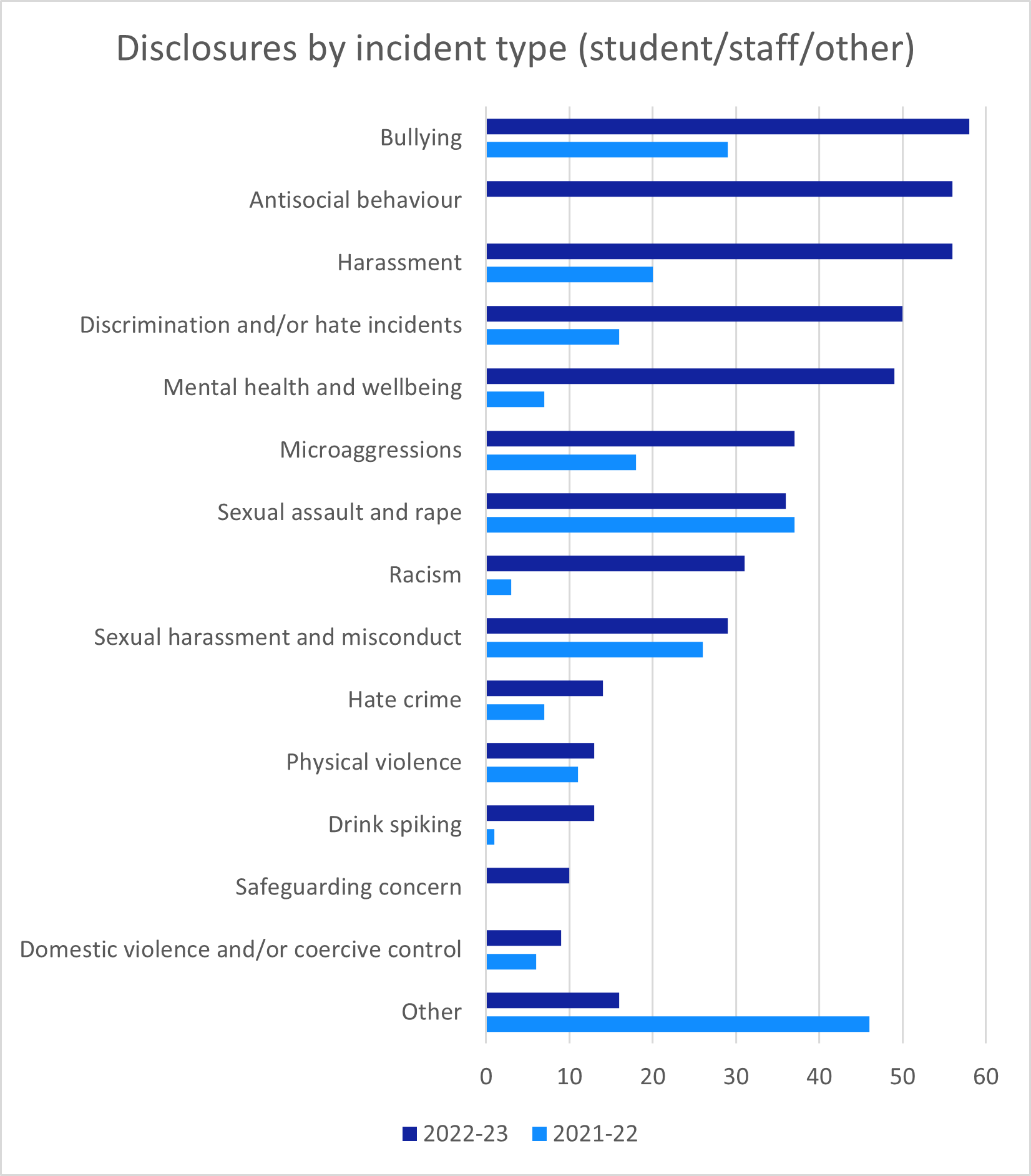
In 2022-2023, the most common incident types disclosed by students were Harassment and Anti-social behaviour.
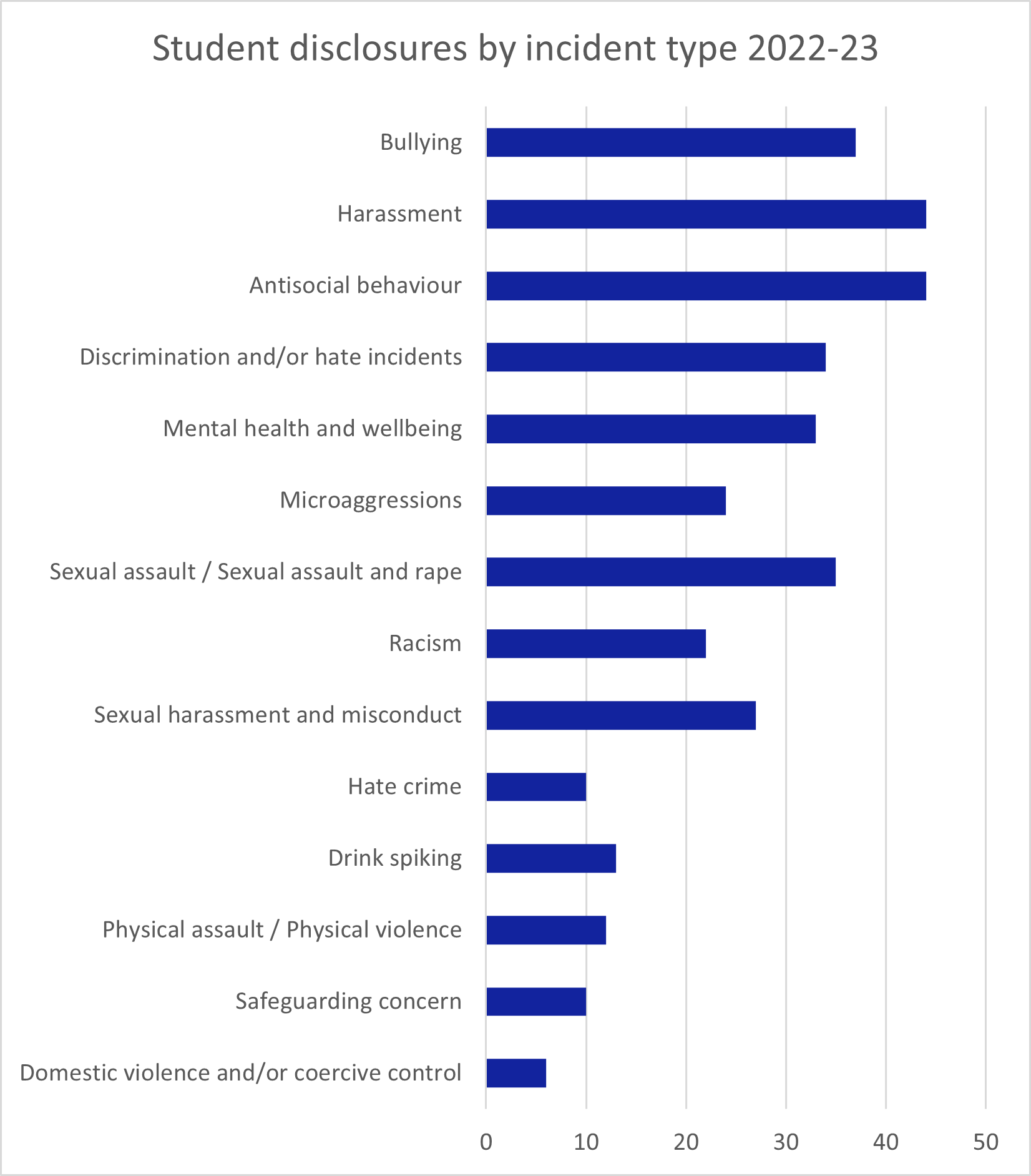
For staff, the type of incident most likely to be disclosed was bullying, with some types seeing no disclosures at all:
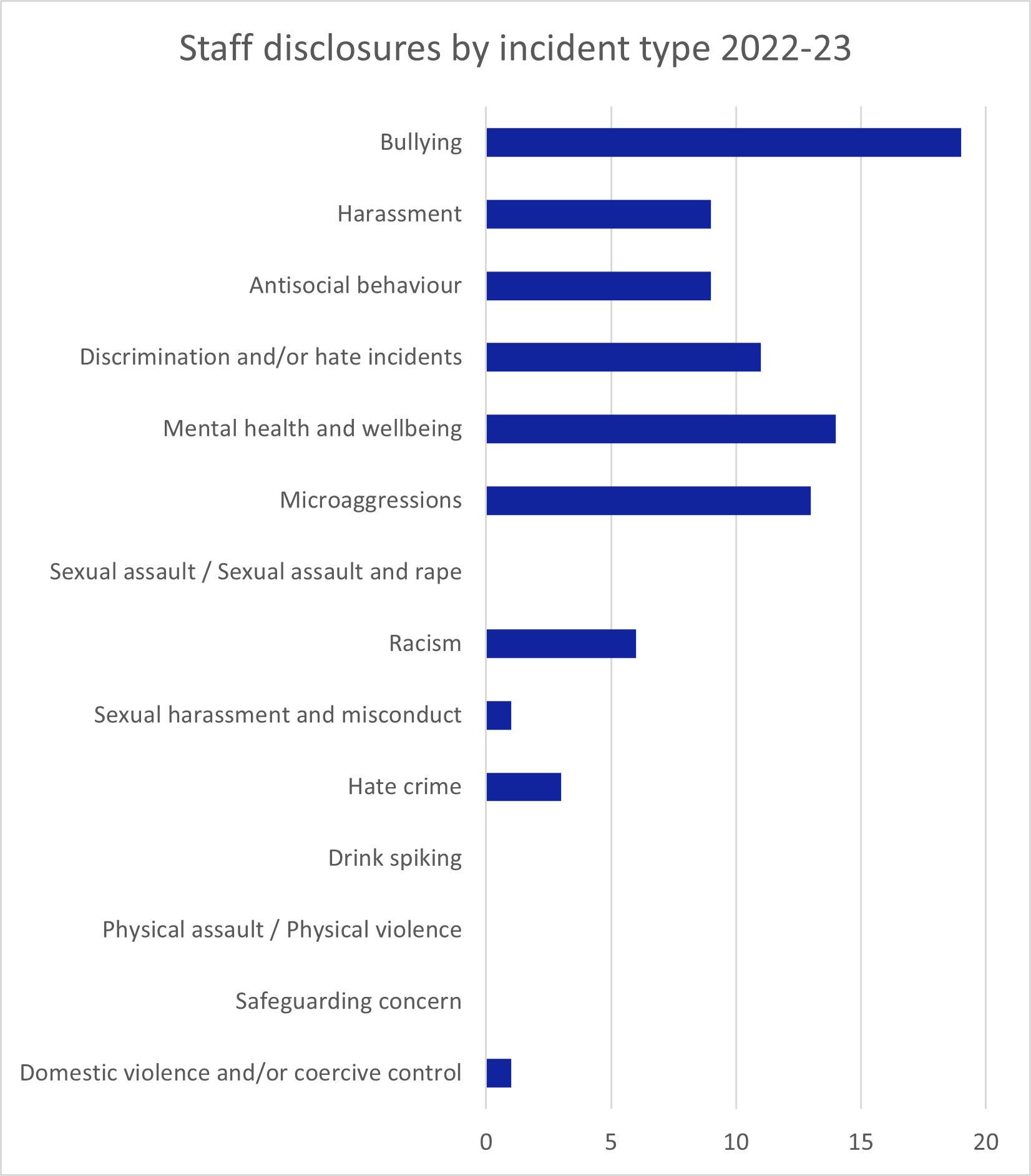
How are people using Report + Support?
Disclosures can be made both anonymously and with contact details.
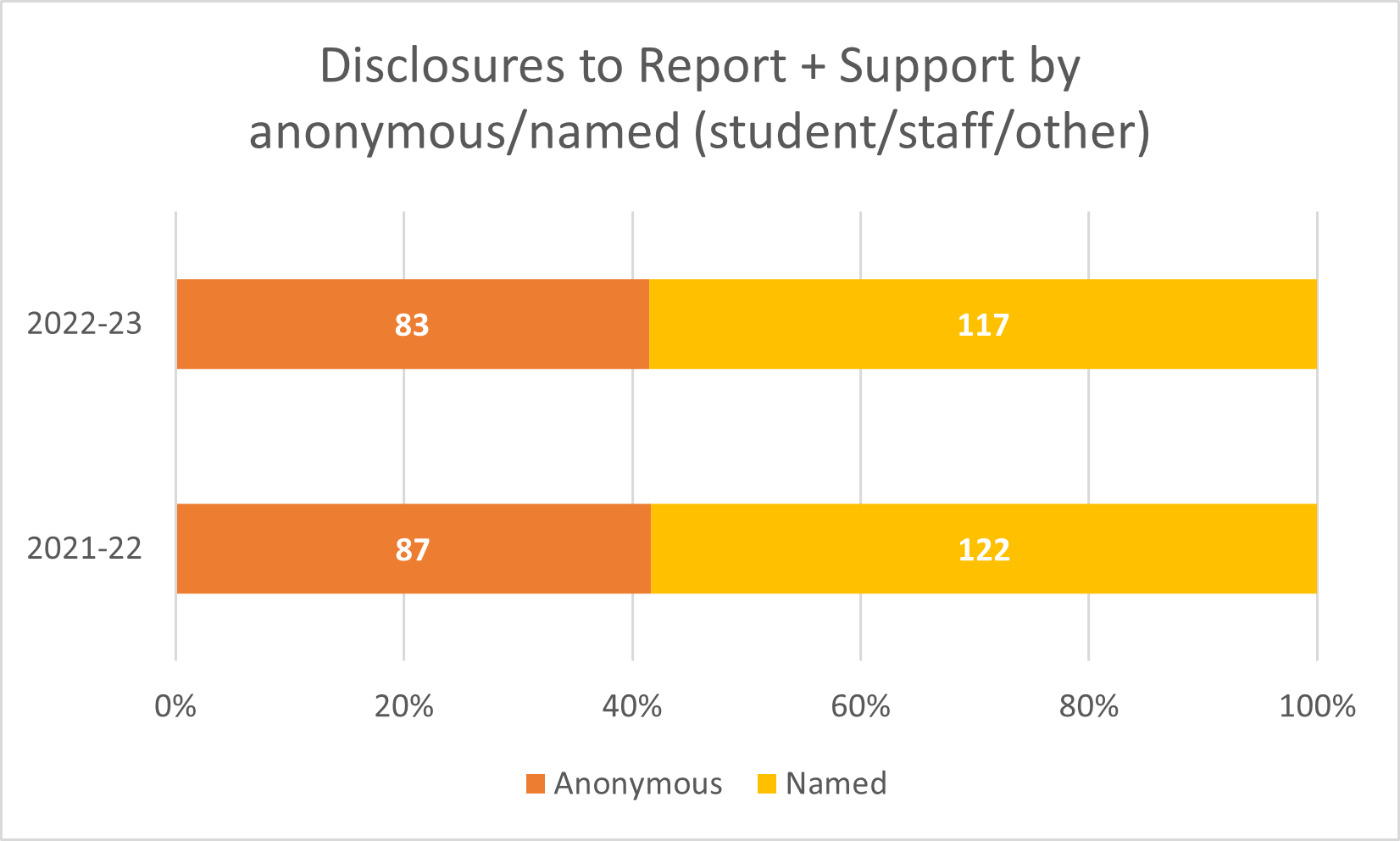
Students are more likely to use the Named form than staff, with over 60% of student disclosures received this way. Staff are more likely to use the Anonymous form to make a disclosure.
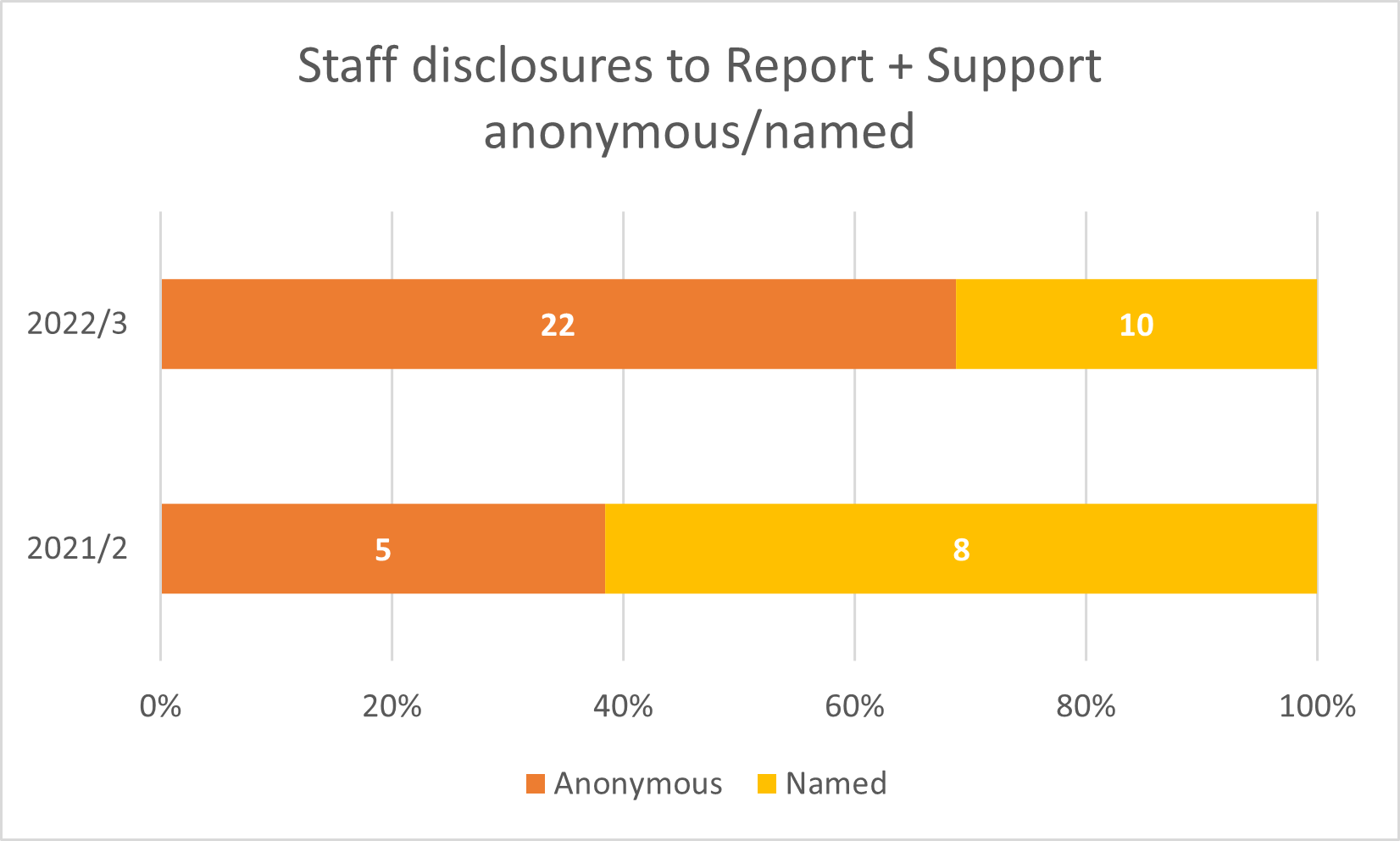
What were the reasons for anonymity?
When asked, one or more of the following options can be chosen:
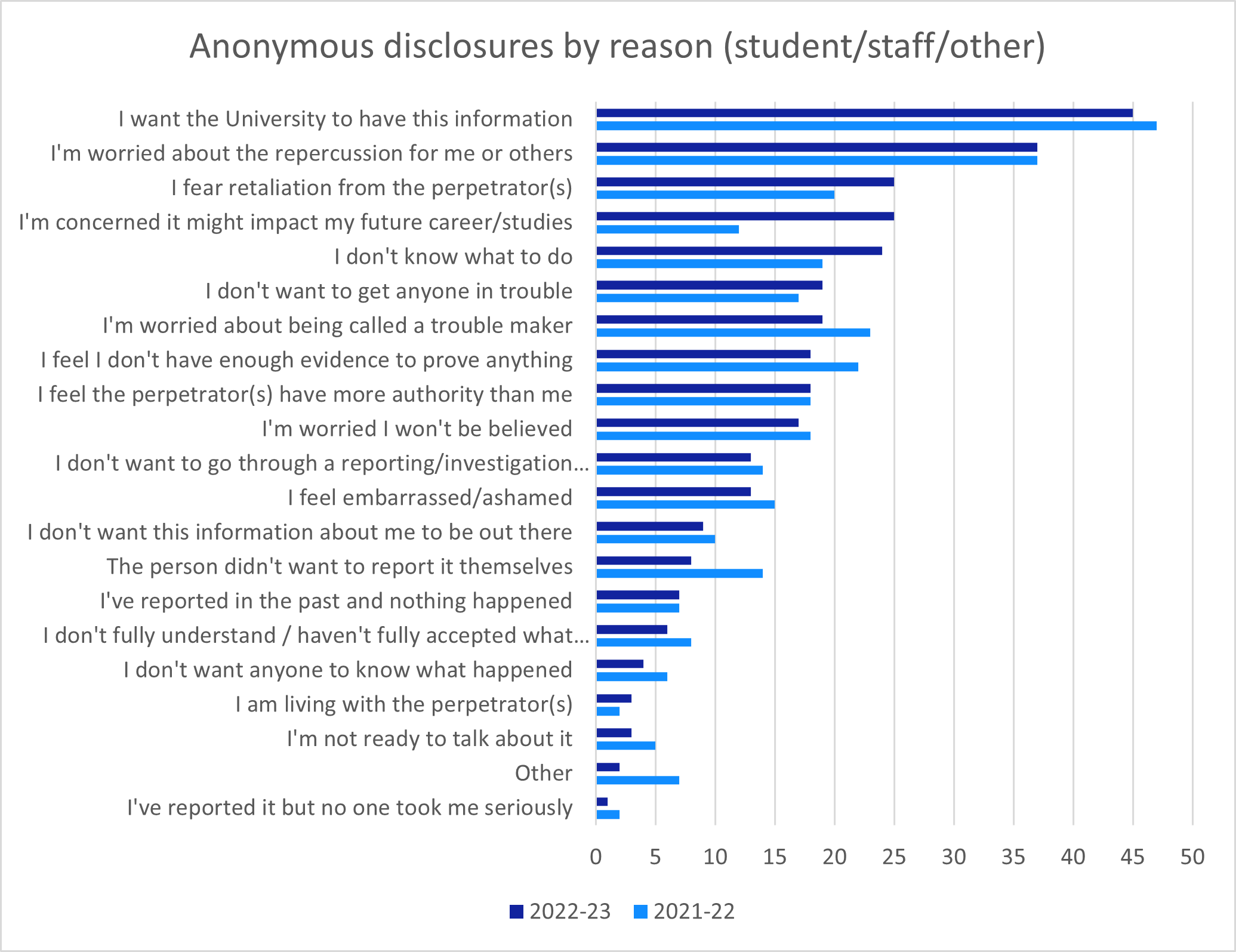
The most common reason chosen by students and staff is “I want the University to have this information.” The next most common reason is concern about repercussions; “I’m concerned it might impact my future career/studies” has doubled compared with last year.
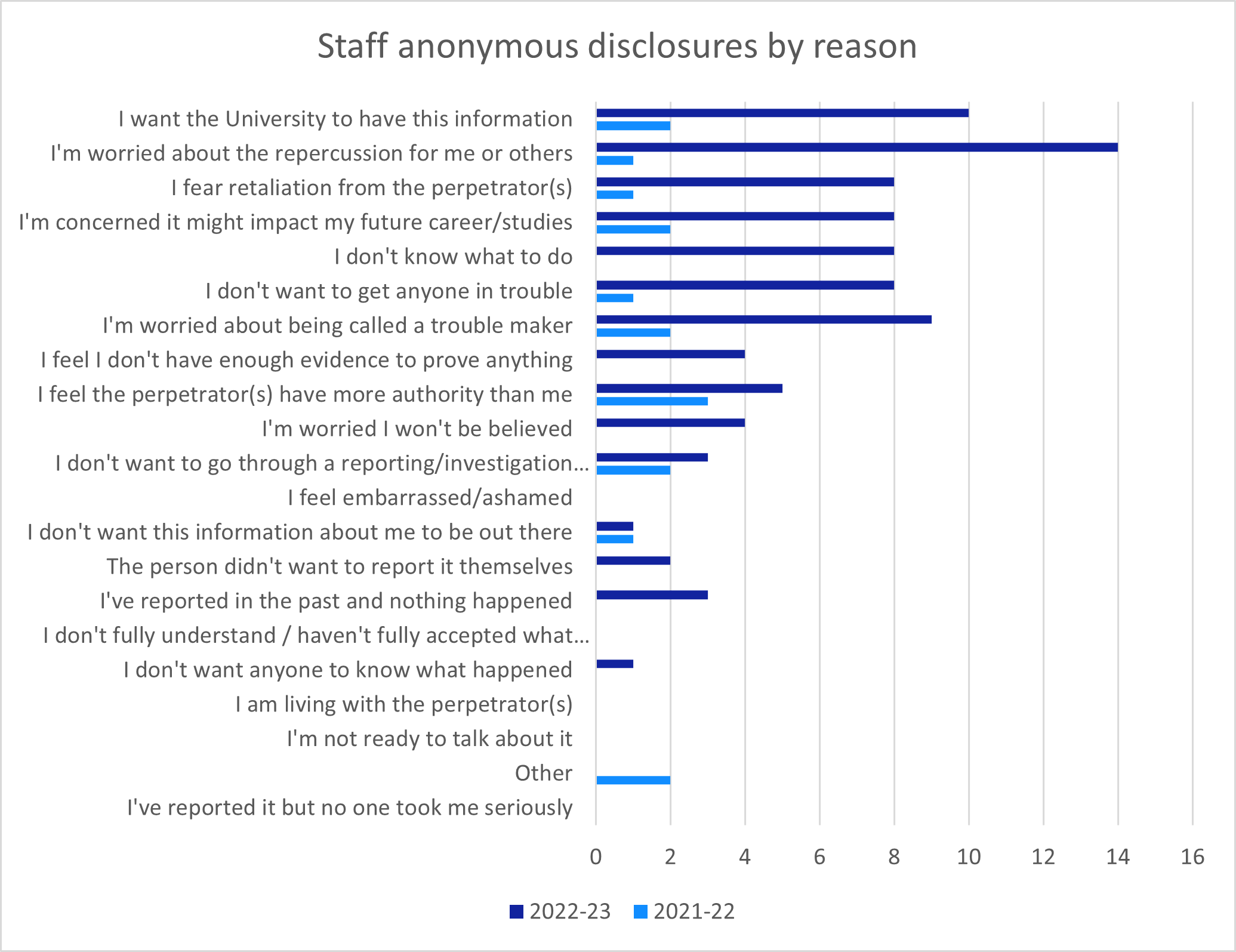
For staff, the most common reason selected this year was “I’m worried about the repercussion for me or others”: 64% of anonymous staff disclosures selected this, compared with 35% of students selecting it as a reason.
Where are the incidents located?
The data revealed:
- An increase in ‘On campus’ disclosures.
- A marginal decrease in housing (both Halls of residence and Student Housing/Private).
- A decrease in ‘In hospitality venue’.
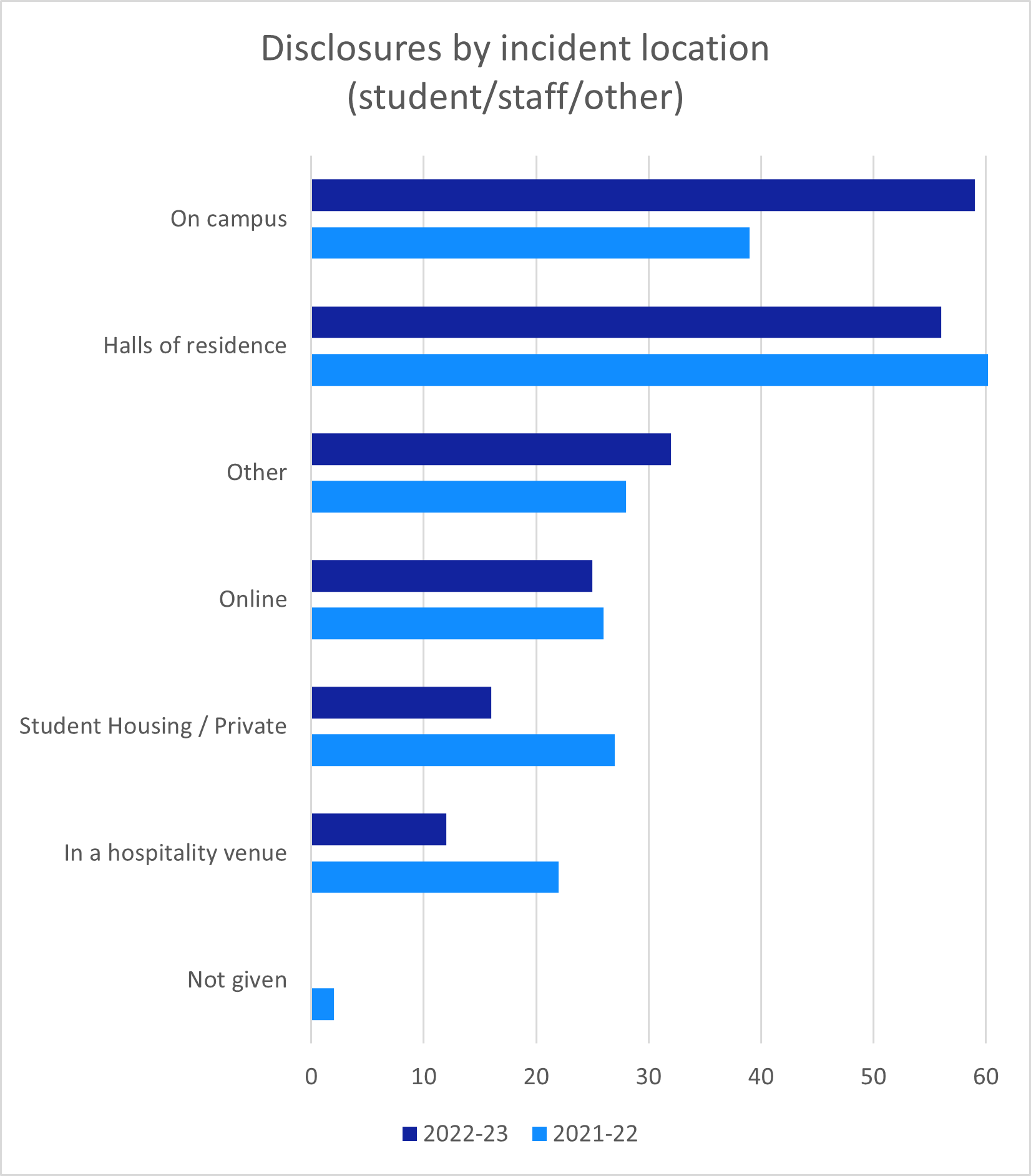
What are the disclosure outcomes?
Expert staff practitioners carefully consider all disclosures. The outcomes they arrive at are detailed below:

The Delivery of Action Plan section of this report outlines the work that has been done to ensure that outcomes accurately reflect the actions that have been taken as a result of the disclosure, where possible.
A disclosure might be ‘closed as anonymous’ because insufficient details have been provided to take further action. Without contact details there is often lack of evidence to corroborate. However, disclosures that are closed as anonymous are instrumental in identifying patterns that can help us to legislate for a safer community.
The most common outcome for disclosures (excluding being closed as anonymous) this year was “Information passed to relevant staff” following risk assessment (49 disclosures), in contrast with last year where it was “Referred for student conduct risk assessment and/or disciplinary action” (41 disclosures).